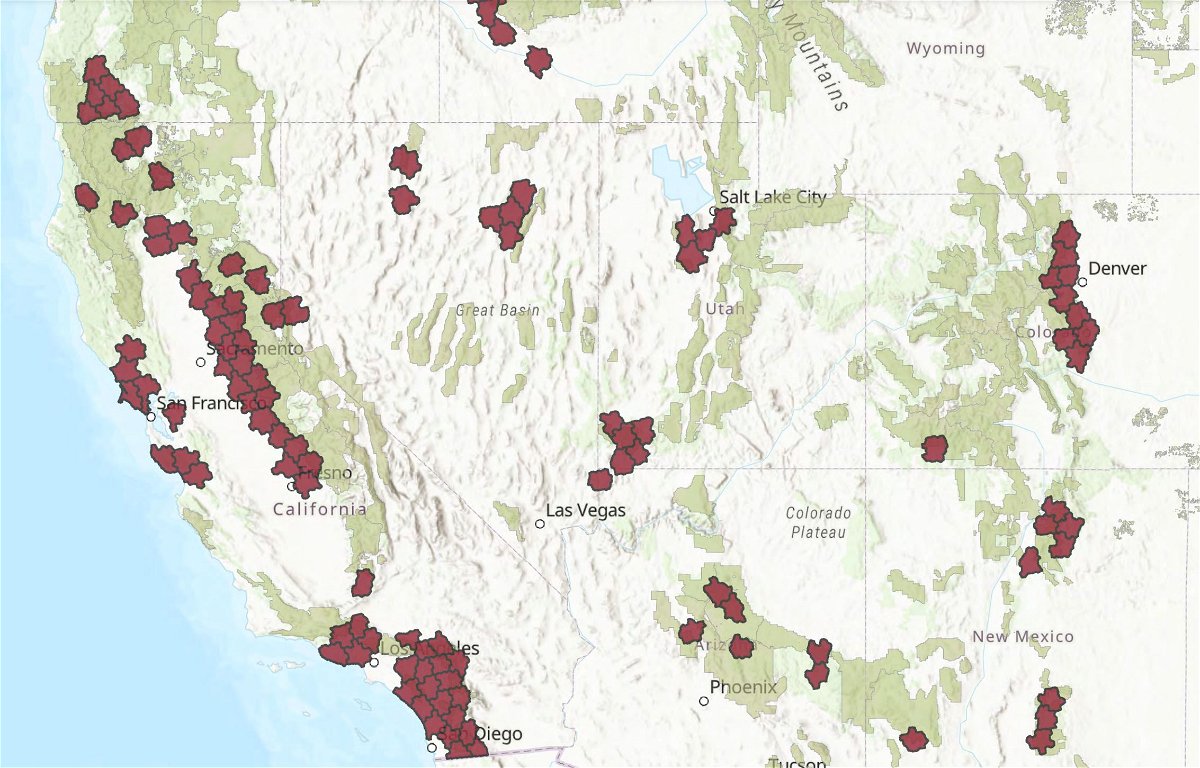Historic funding aims to fix Colorado’s forest crisis
COLORADO SPRINGS, Colo. (KRDO) -- Following the state's two largest wildfires in 2020 and the most destructive fire in 2021, there is a renewed push to protect homes from the next wildfire in Colorado.
However, there is far less attention on the millions of acres of forest that is mostly managed by the federal government.
Due to funding problems, this wilderness was neglected for decades. That is starting to change, but many question whether it's happening too slowly to keep up with our evolving climate.

In late January outside Lake George in Park County, the conditions are just right for pile burning.
Each pile is a combination of what fell to the ground naturally, and what this crew from the US Forest Service cut.
This form of forest treatment is a proven tactic in fire prevention. By taking away those fuels sitting on the ground and removing the lower branches on trees, it makes it harder for flames to reach the crowns of the trees.
When a fire is kept on the ground level, it doesn’t burn nearly as hot or spread nearly as fast.
As a result of this treatment along County Road 98 in Park Count, the road is now a barrier where firefighters have a much better chance to stop a wildfire in its tracks before it reaches nearby homes.
The only problem with this kind of forest treatment is there's just not enough of it going on.
Caleb Schutz, a Fuels Engine Captain with the USFS South Park Ranger District, says "At the district level, we're doing what we can with the resources and the people that we have. Overall, do I think we could do better as an agency? Yes, I think we should be doing a lot more of this.”

“We have let it get to an excess,” adds Alfonso Montoya, USFS Acting Assistant Fire Management Officer, “and we're trying to restore it back to a natural state."
For a long time, both the US Forest Service and the Bureau of Land Management had to deal with something called fire borrowing. That happens when the funding for fire suppression runs out, and agency leaders are forced to divert money from the fund set aside to pay for fire prevention projects. As a result, the prevention work isn’t done, and the danger from future fires only increases.
Secretary of Agriculture Sonny Perdue sounded the alarm about fire borrowing in 2017.

"When we leave a fuel load out there because we have not been able to get to it because of a lack of funding, or dependable funding, we're asking for trouble, we're asking for disasters year in and year out,” he said.
The following year, Congress changed that funding process.
The next major step came in the fall of 2021 when lawmakers in Washington approved $3.3 billion toward forest fire prevention as part of the Infrastructure Investment and Jobs Act.
Colorado Sen. Michael Bennet pushed hard for the IIJA, arguing that spending more on fire prevention made good financial sense.
He estimated the cost per acre of putting out a fire is 33 times more than paying for the work to prevent one.
"Let's do the upfront mitigation,” Bennet told KRDO, “We can treat an acre for about $1,500, instead of $50,000."
The new federal funding gives the crew from the South Park Ranger District hope.
"I think that's good if they can do that because that will put more people on the ground, because that will get more people on the ground to do more stuff throughout the year,” says Schutz.
Colorado State Forester Matt McCombs believes there has never been this much awareness of the poor health of the forest nor the investment to improve it.

"This is probably the most exciting moment in forest management and forestry in the history of this country,” he said.
McCombs hopes this massive federal response, spread out over a 10-year period, is enough to address what has clearly become a crisis, due to both climate change and decades of not doing enough.
“We are in a place where bold action is required to respond to the challenges that we face. We absolutely have to do more,” he says.
As part of its new 10-year strategy, the US Forest Service identified the areas of most concern throughout the country, known as "High-Risk Firesheds" with a high degree of community exposure, and the entire front range of Colorado from Fort Collins to Pueblo is included.

Those areas will be the first to be addressed.
McCombs hopes the projects in those areas can get underway by the end of summer 2022.
